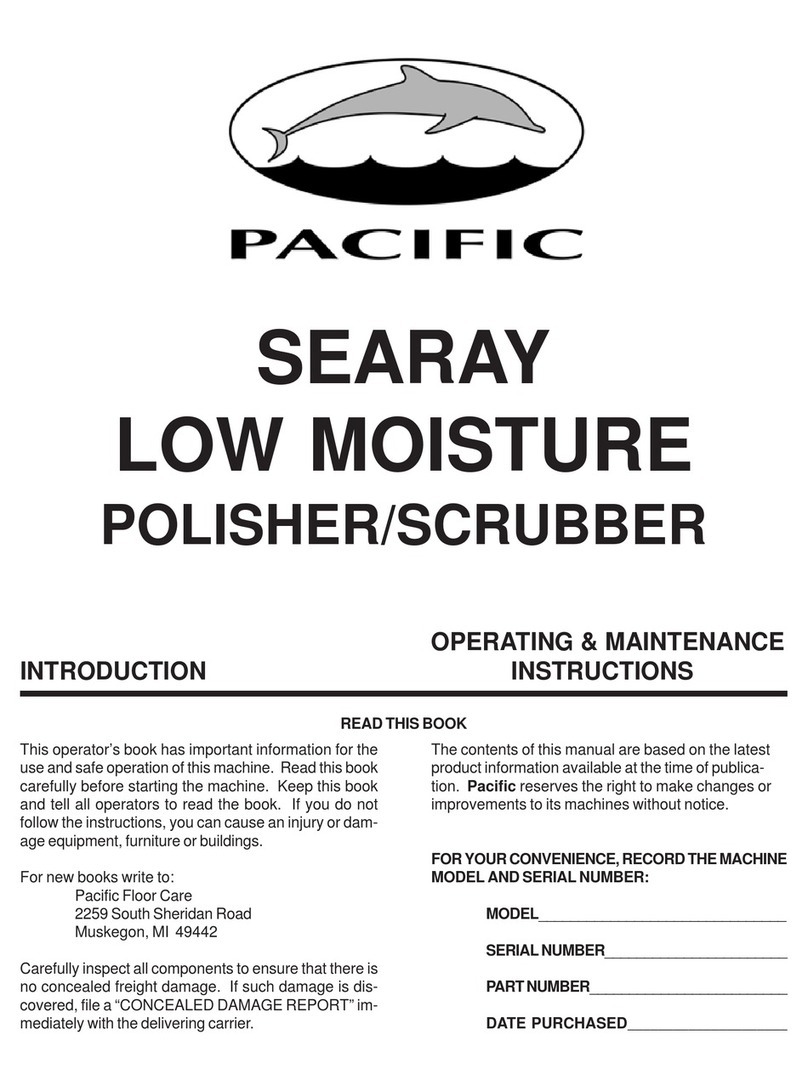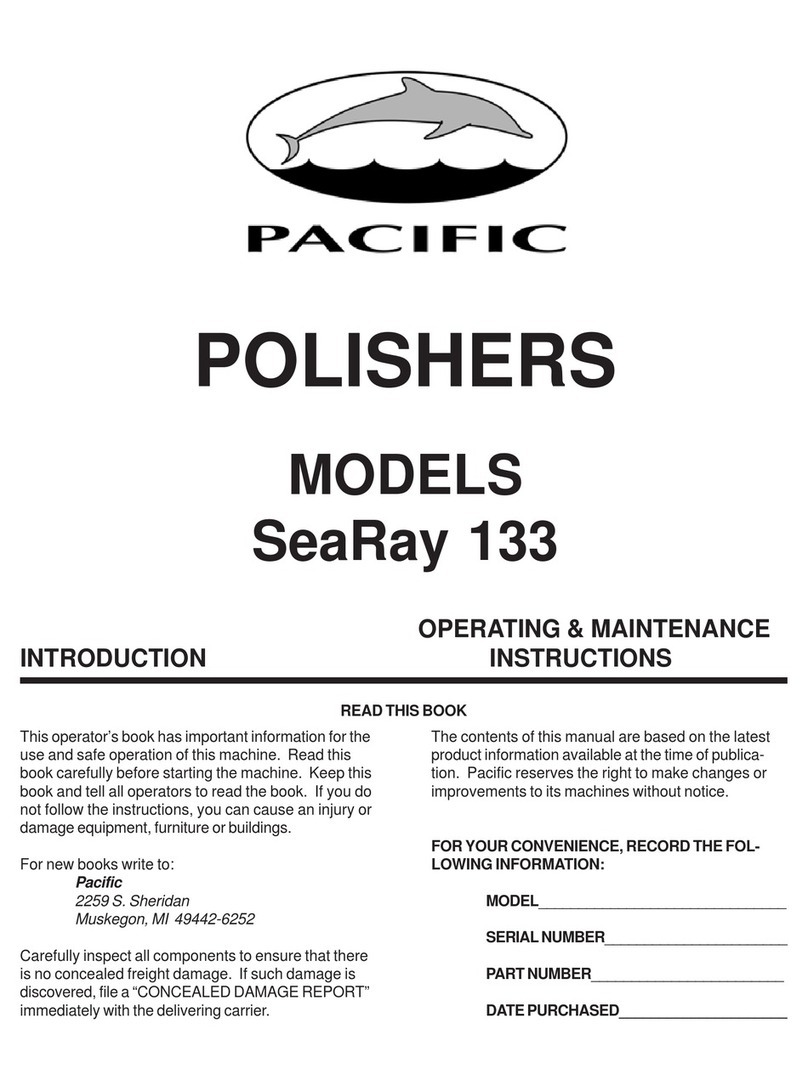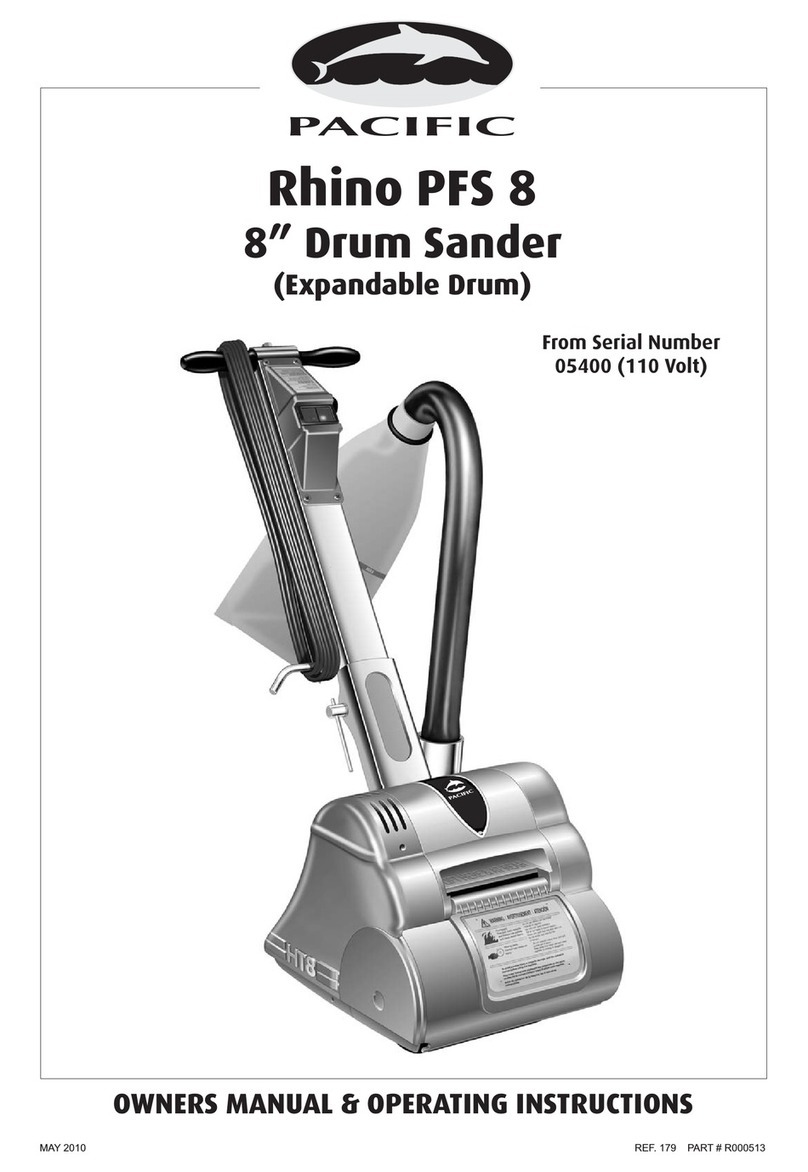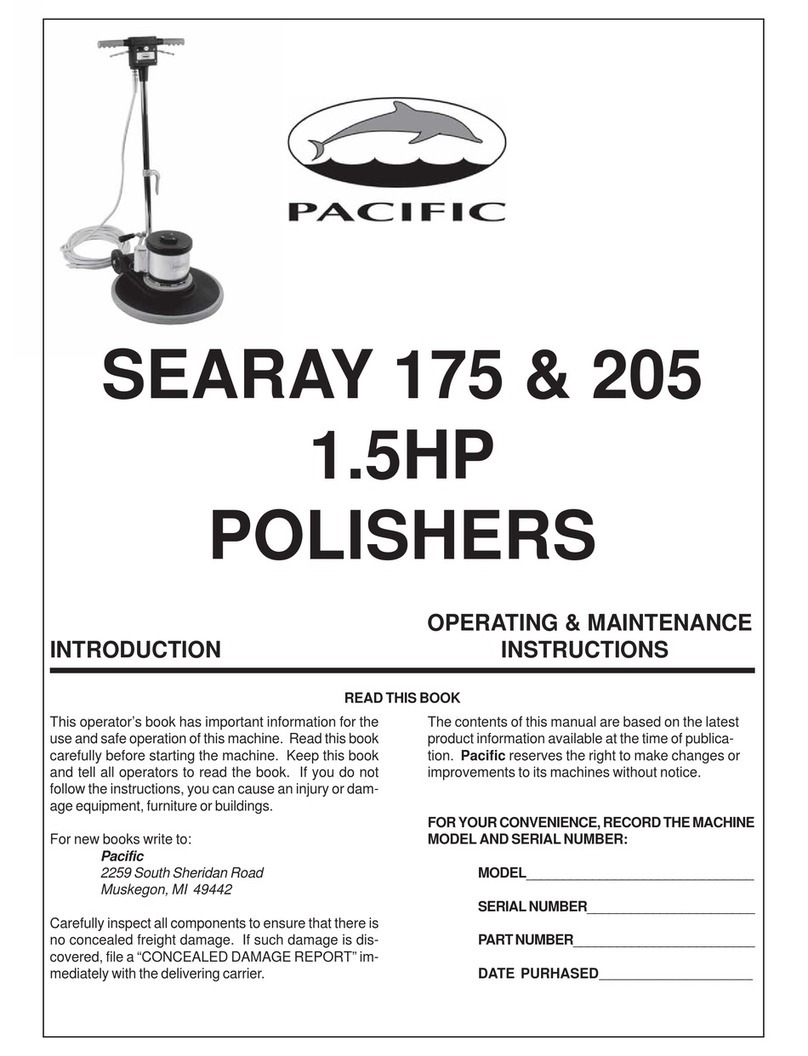FLOOR SANDING TECHNIQUE
Pacific Rhino PFS 8 Drum Sander
Pacific Wolverine Edger Sander
Hand Sanding
- a powerful floor
sander designed for the rapid leveling and sanding of
all types of wood flooring excluding thin laminated or
veneered floors. Load the sander with abrasive
making sure that it is skin tight around the drum.
Loose sheets will tear. Place the sander on the right
hand wall (unless you are making an angled cut on
uneven floors) with about two thirds of the floor in
front of you. Start the sander with the drum off the
floor then walk forward at an even pace and ease the
drum on to the floor. As you near the end of the pass,
gradually raise the drum off the floor. Practice this
technique before turning on the sander.
Cover the same path you made on the forward cut by
pulling the machine backwards and easing the drum
to the floor as you begin the backward pass until you
reach the original starting point, then ease the drum
off the floor.
When two thirds of the floor is sanded, turn the floor
sander around and sand the remaining third in the
same way. Overlap the one third area by 2 to 3 feet
with the two thirds area to blend the two areas
together.
- a powerful edger
sander designed for sanding along the edges of a
floor without damaging the baseboards or moldings.
Also suitable for smaller areas where the Pacific Rhino
PFS 8 Drum Sander will not reach like stair treads and
closets. Load the abrasive disc making sure the
retaining bolt is tight. Start the edger with the disc off
the floor then lower the disc to the floor as you move
the sander. Work progressively moving the sander in
a sweeping motion from side to side.
- to sand difficult to reach areas
scrape and sand the floor by hand. Use a scraper to
remove old finishes, always scraping in the direction
of the grain, and then sand by hand using the same
grit abrasive as you finished with when machine
sanding. See Floor Sanding Technique diagrams on
page 5.
WARNING - never bounce the sanding
drum or dwell in one place as this will
sand dips and hollows in the floor.
FLOOR TYPES
PLANK & STRIP FLOORS
PARQUET & BLOCK FLOORS
Old floors in good condition
Uneven floors
Floors with an existing finish
- when the floor is in
good condition - no uneven edges, cupping or
crowning of planks and strips - and you want to re-
surface the floor, sanding back to new wood, start
sanding in the direction of the planks or strips - with
the wood grain. Start with a grit abrasive.
Complete the first cut with the Pacific Rhino PFS 8
Drum Sander then sand up to the baseboards and
door thresholds with the Pacific Wolverine Edger,
using a grit abrasive, blending the edges in
with the main floor area. Sweep the floor. Using a
grit abrasive, sand the main floor area
with the drum sander and then complete the floor with
the edger using a grit abrasive. Sweep the floor.
Finish sanding the main floor area with the drum floor
sander using a grit abrasive.
- when the floor is uneven sand
diagonally at 45 across the room in both directions
using the Pacific Rhino PFS 8 Drum Sander with a
coarse grit abrasive. Only make one cut on both
diagonals, this will achieve a basic level. Now
complete the floor as for a level strip or plank floor.
Use the same grit abrasive as was used on the 45 cut
for the first cut parallel to the planks or strips.
- when re-finishing a
floor remove as little of the existing surface as
possible. If the floor is badly marked and scratched
and has to be sanded back to new wood use the
Pacific Rhino PFS 8 Drum Sander and Pacific
Wolverine Edger Sander. Always try a medium grit
paper first, particularly on a diagonal cut. If 90% of
the old finish is removed and the floor is generally
leveled, you do not need to use a coarse grit abrasive.
The grain of the wood will run in a number of
directions so sand the floor in the direction of the
main source of natural light in the room. If there is no
source of natural light sand in the direction of the
longest side of the room or, if the room is square, in
the direction the furniture is laid out and how people
normally use and view the room.
This technique will help mask any imperfections in the
floor. Complete the sanding operation as detailed
for plank or strip floors.
medium
medium
fine
fine
medium/fine
o
o
4





































